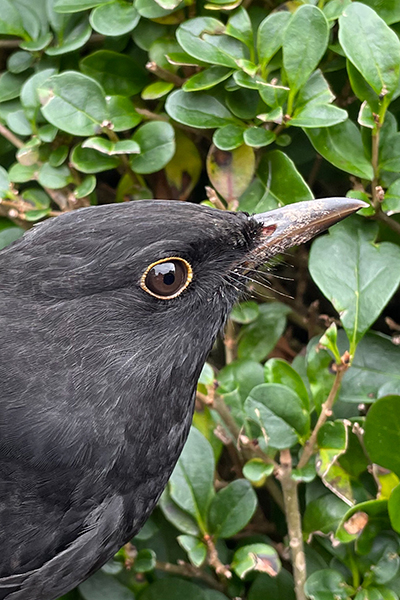I think everyone will be glad to see the back of 2021. Covid 19 lockdowns meant many peoples plans were severely disrupted and many of our plans were put on the back-burner! I managed 4 new species for the year taking my life list up to 531- new birds were Northern Mockingbird, Red-necked Stint and Belted Kingfisher! the 4th was an 'armchair tick' with the long overdue addition of Ross's Goose to the British list. Unfortunately I missed some really good birds by being either to slow off the mark or away! Sulphur-bellied Warbler was one such bird where I dithered about going incase I couldn't get a boat to Lundy. Hindsights a wonderful thing and in retrospect I should have just gone as there were apparently plenty of seats available on various charter boats. I can't really complain at missing the Varied Thrush on Papa Westray as I was in the Maldives belatedly celebrating my 60th birthday trip that had been rescheduled from the beginning of the year. I ticked two of my most wanted of my all time bucket list on that trip - diving with Manta Rays and best of all Whale Shark!
Most of my birding these days is done within walking distance of our house. Unless I'm twitching something thats where I prefer to be. An exception to this is our annual trip to Shetland (see write up here). I consider Shetland as my home from home and look forward to our annual sojourn every year. By no means a classic year but good company and we did find a few good birds.
The local patch is mainly improved pasture with some arable and a few ponds - one of which is conveniently opposite my study window and has my telescope trained on it most of the time! It has turned up some good birds and this year I added three new species to the house / patch list (all three were seen from the house!) - Red Kite, Cattle Egret & Goshawk! Looks like I'll have to submit a couple of county rarities forms! Another local highlight was the successful breeding of our local Little Owls. They hadn't bred successfully for three years since the original female was killed by a Sparrowhawk in our garden.
Ringing been a major part of my birding year with regular trips out with SCAN canon netting waders and ringing seabirds on Puffin Island. I didn't get to Hilbre as much as I'd like this year due to various other issues we've had at home but hopefully I'll get across more in 2022. I was on the island when the Melodious Warbler was trapped and ringed and that was a nice addition to my county & Hilbre lists! (see here)
Another highlight was a June trip to Shetland with some good mates. We didn't see the hoped for Orca but didn't do to badly! - see here. Breeding Red-necked Phalaropes and an adult Long-tailed Skua holding territory were pretty good. Coupled with an adult male Snowy Owl on Ronas Hill and some good company it was memorable trip.
One of the major highlights of my year was undoubtedly my first trip to Bardsey with Chris to help install the Observatories solar system. A steep learning curve for me! Steve and Emma looked after us extremely well and we even got to ring some Manx Shearwaters and Storm Petrels. A write up on that trip can be read here). A fabulous place and I really don't know why I hadn't been across before.
So, what will 2022 bring? Hopefully we'll all be free of Covid19 and its various mutations. As parents of an Australian citizen we've got a special permit to enter the country and hope to go in February. Amy & Jeremy have bought us a hot air ballon flight as a Christmas present. Taking off from one of the local wineries and then landing for a champagne breakfast somewhere! Another one off the bucket list of things to do before I become too decrepit. Another bird on my all time wanted list is the Australian Regents Honeyeater and their new house is in one of the hot spots for this rapidly declining species. It will be looking like the needle in the proverbial haystack though with an estimated 300 birds left in an area the size of the British Isles!
Again, we're hoping that a delayed trip to Africa will come off later in the year with a week on safari in the Masai Mara and a week in Zanzibar. I've already booked our accommodation on Fetlar in October and it'll be my 15th consecutive autumn on Shetland.
Heres wishing all my friends and family a Covid free and happy new year. I'll see you all on the other side.


































































